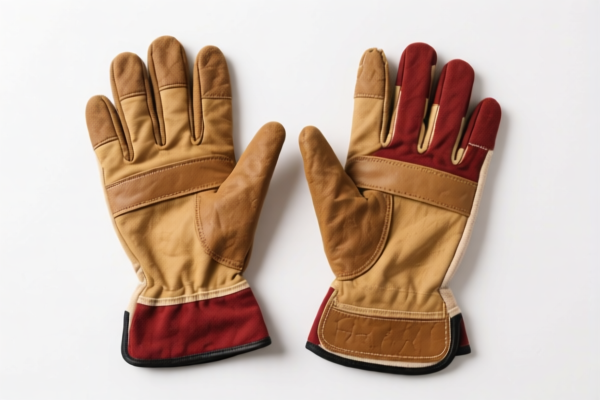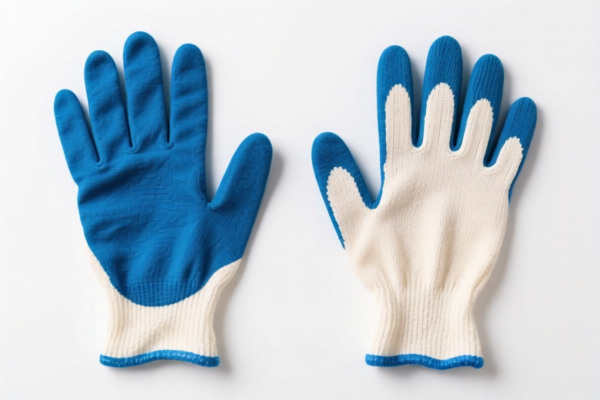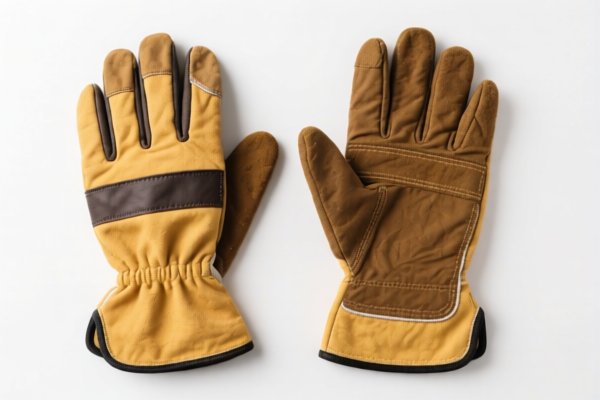| HS Code | Official Doc | Tariff Rate | Origin | Destination | Effective Date |
|---|---|---|---|---|---|
| 3926201010 | Doc | 30.0% | CN | US | 2025-05-12 |
| 3924104000 | Doc | 33.4% | CN | US | 2025-05-12 |
| 3924905650 | Doc | 40.9% | CN | US | 2025-05-12 |
| 6216000500 | Doc | 37.5% | CN | US | 2025-05-12 |
| 6216000800 | Doc | 38.3% | CN | US | 2025-05-12 |




Glued Gloves
Glued gloves are personal protective equipment (PPE) designed to provide a barrier against contaminants, typically chemicals, biological hazards, or particulates. The defining characteristic is the method of attachment – the glove material is bonded directly to a supporting inner liner, rather than being individually constructed and then worn over another glove.
Material
A wide range of materials are used, selected based on the intended application. Common materials include:
- Nitrile: Offers excellent resistance to chemicals, punctures, and abrasions. Commonly used in medical, automotive, and industrial settings.
- Neoprene: Provides good resistance to a broad range of chemicals, including oils and solvents. Often used in applications requiring flexibility and moderate chemical protection.
- Latex: Historically common, latex offers good elasticity and sensitivity but carries a significant allergy risk. Use is declining due to this.
- PVC (Polyvinyl Chloride): Offers good resistance to water, acids, and bases, but less flexible than other materials.
- Polyethylene: Provides a barrier against water and some chemicals, often used for light-duty applications.
- Butyl Rubber: Offers exceptional resistance to gases and vapors, making it suitable for handling highly hazardous chemicals.
Purpose
The primary purpose is to protect the wearer's hands from:
- Chemical Exposure: Preventing skin contact with corrosive, toxic, or irritating substances.
- Biological Hazards: Shielding against viruses, bacteria, and other pathogens.
- Particulate Matter: Protecting against dust, powders, and other airborne particles.
- Physical Hazards: Providing a barrier against abrasions, cuts, and punctures.
Function
Glued gloves function by creating a continuous, impermeable barrier. The adhesive bonding ensures that the glove material is fully sealed to the inner liner, preventing penetration of contaminants. The inner liner provides comfort and ease of donning and doffing. The specific barrier properties are determined by the glove material.
Usage Scenarios
- Medical & Healthcare: Examination, surgery, laboratory work, handling infectious materials.
- Industrial Manufacturing: Chemical processing, painting, automotive repair, electronics assembly.
- Food Processing: Handling food products, cleaning equipment, maintaining hygiene.
- Pharmaceuticals: Compounding, research, quality control.
- Cleaning & Sanitation: Handling cleaning agents, disinfecting surfaces.
- Cosmetics: Manufacturing and handling of cosmetic ingredients.
Common Types
- Powder-Free vs. Powdered: Powder-free gloves reduce the risk of allergic reactions and contamination. Powdered gloves offer easier donning but pose a higher risk.
- Sterile vs. Non-Sterile: Sterile gloves are used in surgical procedures and other applications requiring a high level of hygiene.
- Different Thicknesses: Thicker gloves provide greater protection but reduce dexterity.
- Extended Cuff Gloves: Offer increased protection for the wrist and forearm.
- Textured Gloves: Provide improved grip and dexterity.
- Double-Donning Gloves: Utilizing two layers of gloves for enhanced protection, common in high-risk situations.
Based on the provided information, “glued gloves” can be classified under several HS codes, depending on the specific material and intended use. Here's a breakdown:
- 3926201010: This HS code covers articles of plastics, specifically seamless surgical and medical gloves, mittens and mitts. If the glued gloves are intended for medical use, this code is applicable. The tax rate is 0.0% base tariff, 0.0% additional tariff, and 30.0% after April 2, 2025, resulting in a total tariff of 30.0%.
- 6216000500: This HS code applies to gloves, mittens and mitts impregnated, coated or covered with plastics or rubber, specifically ice hockey gloves and field hockey gloves. If the glued gloves are designed for these sports, this code is relevant. The tax rate is 0.0% base tariff, 7.5% additional tariff, and 30.0% after April 2, 2025, totaling 37.5%.
- 6216000800: This HS code covers gloves, mittens and mitts impregnated, coated or covered with plastics or rubber, specifically other gloves, mittens and mitts designed for use in sports, including ski and snowmobile gloves, mittens and mitts. If the glued gloves are sports gloves but not specifically ice or field hockey gloves, this code applies. The tax rate is 0.8% base tariff, 7.5% additional tariff, and 30.0% after April 2, 2025, resulting in a total tariff of 38.3%.
According to the provided reference material, the HS code options related to 'glued gloves' are limited, with only the following 3 found.
It is important to determine the precise material composition and intended use of the glued gloves to select the correct HS code. If the gloves are made of plastic and intended for general use (not medical or sports-specific), further clarification may be needed as the provided reference material does not offer a direct match.
Customer Reviews
A really good resource for understanding HS Code 3925. I'm glad I found this page before shipping my first batch of doors.
The content is accurate and well-organized. I found the part about exporting plastic doors particularly useful for my project.
This page saved me time! The HS Code and tariff info for plastic doors to the US were exactly what I needed for my business.
The explanation of the 5% tariff rate was clear and concise. I wish there were more examples, but it's still very helpful.
I was looking for HS Code info on plastic doors, and this page had it all. Perfect for someone new to international trade.